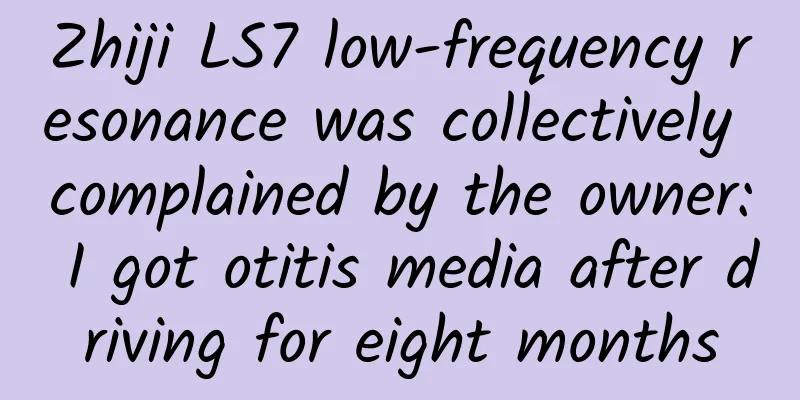K12 online education user stratification operation strategy!

|
In user operations , more and more products have begun to pay attention to user stratification operations. Many products hope to collect user portraits in the product background, conduct user behavior analysis, and ultimately achieve precise tiered product operations. But from collecting user portraits to formulating tiered operation strategies. There is often a lack of rigorous analysis in the middle, for example: Are the interests of users of different ages really the same as we think? Do users of different identities really have different levels of price sensitivity? Many operational strategies are still decided based on intuition or experience. In this article, the author combines the one-way analysis of variance method in statistics to provide a new data analysis method that can assist operators in making decisions.
The company I work for has a K12 online education platform that provides live online courses for middle school students. In a user survey we conducted not long ago, we found that social factors (including advertising and media publicity, word-of-mouth from parents and classmates, etc.) can significantly affect users’ willingness to purchase online courses. (For the specific process of research and analysis of influencing factors, please refer to my previous article) Based on this conclusion, the company decided to try to place some channel advertisements to expand its social influence. Therefore, the next step is to study the different levels of users and the extent to which they are affected by social factors, so as to help the company formulate more accurate stratified promotion strategies and achieve precise delivery. Therefore, the objectives of our analysis can be summarized as follows:
Our K12 online education platform accumulates data through backend user portraits, which can be divided into four categories based on user identity: junior high school students, parents of junior high school students, high school students, and parents of high school students. In addition to identity, we can choose another dimension for stratification - user purchase history. That is to say, the depth of usage of my platform by all registered users can be divided into three categories: those who have purchased full-priced courses, those who have only purchased free trial courses, and those who have never purchased. Of course, in specific operations, we can select different dimensions for analysis according to the needs of the operation purpose: such as gender, age stratification, regional stratification, etc. The stratification can be more in-depth. For example, after being divided into junior high school and high school, it can be further subdivided into grades... However, for the convenience of explanation, this article only selects 2 dimensions and 1 influencing factor as an example.
The data basis for this analysis still comes from the previous survey data, and the collection process is still in the article mentioned above, so this article will not go into details. In fact, user stratification analysis should be done in the questionnaire design before the survey to avoid secondary work. I have also described the questionnaire design in detail in my previous article. Those who are interested can check it out. Next, we use SPSS software to perform one-way analysis of variance. Analysis of variance, also known as analysis of variance (ANOVA), can compare multiple means and is a more effective mathematical statistics method. 3.1 User identity dimension Let’s first analyze from the user’s identity dimension: The results of analysis of variance (ANOVA) show that the difference in the mean of social influence is significant (*** represents a significant difference), indicating that users with different identities have significant differences in this factor, proving the necessity of this analysis. Next, we conduct a pairwise comparative analysis to analyze the differences in the perception of this factor among users with different identities. In the significance column, smaller values indicate higher significance. From the above data, it can be seen that in the social influence variable, there is a significant difference between parents of junior high school students and high school students (P=0.045<0.05), and the mean difference is 0.62642, indicating that the perception of social influence of parents of junior high school students is significantly higher than that of high school students, while the differences in perceived fairness of distribution among the other groups are not significant (P values are all greater than 0.05). In other words: parents of junior high school students are more likely to be influenced by advertisements and people around them when making purchasing decisions than parents of high school students, while the differences between the other groups are not that big when compared pairwise. The subjective reasons are also relatively easy to analyze: junior high school students still rely on their parents to help them choose teaching supplementary products during their learning stage. Due to age factors, most junior high school students do not have the autonomy to choose to purchase courses. But in fact, most parents do not understand teaching, and they are more easily influenced by people around them and advertisements when they are confused. As for high school students, their parents are relatively powerless to interfere with their academic progress and course selection. High school students already have the ability to make subjective judgments based on their own learning situation. They may also have a rebellious mentality during their teenage years and do not like to follow the crowd. Therefore, they are not as sensitive to courses recommended or advertised by others as parents of junior high school students. 3.2 User Purchase History Dimension Let's analyze users with different purchase histories: The results of analysis of variance (ANOVA) show that users with different purchase histories have significant differences in these social influence factors, so we can conduct further analysis. The conclusions from the data in the above table are as follows: There is a significant difference between users who have purchased online courses and those who have never purchased trial courses (P=0.041<0.05), with a mean difference of 0.27685. Users who only bought trial courses also differed significantly from those who never bought courses (P=0.004<0.05), with a mean difference of 0.34722, indicating that users who have bought full-priced online courses have a significantly higher perception of social impact than users who have only bought trial courses, and users who have only bought trial courses have a significantly higher perception of social impact than users who have never bought courses. In other words, the conclusion is: the more deeply users use the app, the more likely they are to be influenced by advertisements and recommendations from people around them. This is completely opposite to our previous idea based purely on experience - most of the time we think that new users are more easily influenced by advertisements and friends' recommendations, while old users will rely on their own experience to decide whether to buy. However, through data analysis , it may be possible to confirm that our empirical judgments may not always be reliable. Users who have purchased online courses may have a higher degree of recognition of online courses, so they are more likely to purchase courses again after being recommended by people around them or after seeing advertisements again.
Based on the data analysis of user stratification in two dimensions, we have preliminarily concluded that user promotion within the product can further cultivate old users, which corresponds exactly to the RARRA model we advocated before. In terms of school stage selection, priority is given to parents of junior high school students for content design and operation. For example, the advertising delivery strategy can target the group of parents of junior high school students, mainly promote junior high school courses, and plan relevant content based on themes such as improving scores in the high school entrance examination. Author: Louise Source: Louise |
<<: Case study of advertising in the circle of friends in the home improvement industry
>>: Strategies to improve user retention
Recommend
Case analysis of gamification operation strategy!
This article will help you inspire gamification m...
Sogou Tangmao Dictionary Pen Review: A portable "smart teacher" that can translate English and ancient poems
As the process of globalization intensifies, the ...
Don't be fooled! Teach you how to distinguish an official refurbished iPhone
Apple’s official refurbished phones are about to ...
Why is it so easy to lose your flag? Here are some tips to help you rush towards your goal with full energy
As we bid farewell to the old and usher in the ne...
WP8.1 preview update: fix a lot of bugs/improve battery life
This morning, Microsoft released the first update ...
120 pieces of experience on huge Qianchuan delivery, a must-read for novices!
Without further ado, let’s get to the point! 1. W...
Apple releases new iOS 14.6 beta: performance improvements and bug fixes
Apple today released the third developer beta of ...
A complete online event plan!
How to write an online event plan ? The planning ...
The chain of contempt within advertising companies
Where there are people, there is a chain of conte...
Talking about my country’s first electrically-propelled satellite “Asia-Pacific-6E”: They are all satellites, so what’s new this time?
Since January 23 this year, when my country's...
The one in the friend circle is not you at all
You post pictures of delicious food you enjoyed w...
Why can't I wash off the "mud" on my neck? Doctor: This is not mud, be careful of these diseases
My friend was a little worried recently because h...
The game is paused. What did you just say about Ma Mei? | Expo Daily
Your best "insider" in the scientific c...
Paper straws forced me to quit even drinking milk tea. Who among my family members understands me?
What can make young people quit drinking coffee? ...
Ear piercing causes intracranial infection. Can a small ear piercing cause such a big harm?
Ear piercing has been a common thing since ancien...









